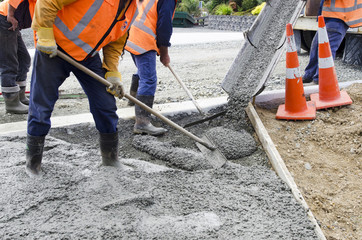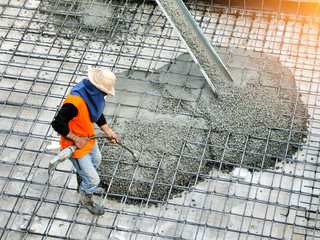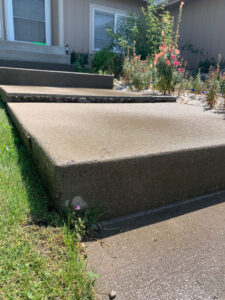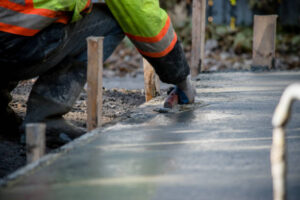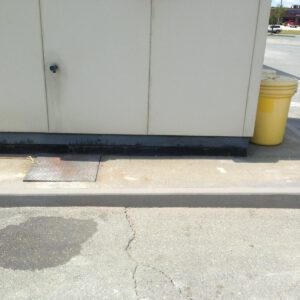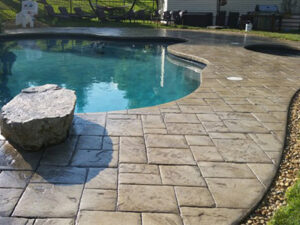Concrete repair is an essential process for maintaining safe and functional surfaces. It is best to address problems as soon as they arise to minimize deterioration and repair costs.
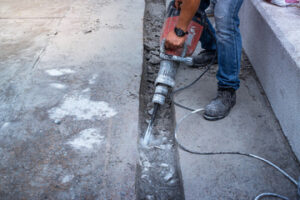
A professional contractor can assess damage and determine the best repair method. This will ensure that the repairs are effective and long-lasting. To learn more, visit https://www.concreterepaireauclaire.com/.
When a concrete surface is damaged, it may develop cracks. These cracks can occur in a variety of ways. They can be either dry or wet, and they can be wide or narrow. Depending on the type of crack, it may be necessary to use different repair methods. For example, it is often more appropriate to use a surface-repairing method for narrow cracks that do not affect the structural integrity of the concrete. On the other hand, it is important to use a structural repair method for larger cracks that do not have a positive aesthetic appearance.
The occurrence of cracks in concrete is a natural phenomenon, and most concrete structures will develop some form of cracking over time. However, cracks can be problematic if they are not dealt with promptly. Cracks can allow water and dissolved salts to enter the concrete, which can lead to reinforcement steel corrosion, concrete deterioration, and spalling. Fortunately, there are many products and repair techniques available to address concrete cracks.
It is important to know the causes of the cracking, as well as whether the cracks are dormant or active. Hairline cracks that appear in new concrete are usually caused by quick moisture loss and are considered to be normal. Plastic shrinkage cracks are also common in new concrete and can be repaired by reworking the concrete with a surface vibrator to close the cracks over their entire depth.
In general, it is best to treat all cracks in concrete as a potential weak point. It is also recommended to carry out regular inspections of the concrete surfaces in order to identify and address any damage or problems promptly, which can help extend the service life of the concrete.
Delaminations
Concrete delaminations are the loosening of thin layers of concrete from the concrete slab. They can occur for a number of reasons. Some of the most common causes include poor mixing, humidity changes, high water content and frost heave. They are a serious problem that must be addressed. They can lead to structural failure of the concrete and are a safety hazard. In addition, they are difficult to repair.
Unlike concrete cracks, which are easy to spot, delaminations may not be visible. The best way to identify them is by tapping or sounding the concrete. Delaminations will produce a drummy or hollow sound when tapped with a hammer as opposed to a ringing sound of robust concrete. This is a sure sign that delamination is present and should be repaired as soon as possible.
This can be done with a dry diamond drill into the delamination and silica sand poured into the void. A epoxy injection can also be used for larger delaminations.
A shotblast or hydrodemolition may be necessary to remove the defective surface layer of the concrete. Then a resurfacing product can be applied. This product is formulated to bond with a sound substrate and create a new working surface.
In a large project, some of the delaminations were caused by troweling that entrapped bleed water. This type of delamination is easier to avoid if the concreting finishes are started after the concrete has completed bleeding.
Leaks
Seeing water on concrete floors may seem like a minor issue to some people, but if it’s left untreated, it can lead to serious problems. Water damage to concrete can cause mold growth, structural issues, and even deteriorate the integrity of the concrete structure itself. Thankfully, a few simple steps can help ensure that concrete stays dry and safe for years to come.
Slab leaks occur when water pipes rupture beneath a home’s concrete foundation. These water lines run through the slab in kitchens, bathrooms, garages, and other rooms to hook up with the home’s plumbing system. A slab leak can have devastating effects on a property if it’s not fixed immediately.
Some signs of a slab leak include unexplained puddles, damp spots, and wet carpeting. It can also be a sign of high water and energy bills that cannot be explained by any extra people in the house or increased water usage.
Plumbers have several methods of detecting slab leaks, including using acoustic, electromagnetic, pressure, and line tracing detection tools to locate the source of a leak. They can then isolate the damaged pipe and repair or replace it.
If you think you may have a slab leak, turn off your main water supply and check the water meter for any unusual readings. If you see a significant increase in your water bill for no apparent reason, call a plumber immediately to have it repaired. They will be able to locate the leak and turn off your water supply, so it can be fixed before long-term damage occurs. This will save you money on your water and energy bills as well as repair the damage caused by the leak.
Molds
Concrete is a very porous material with countless tiny holes and crevices. This makes it an ideal incubator for fungal growth when conditions are right. Concrete itself doesn’t supply enough sustenance for mold to thrive on, but it can collect moisture, pollen, bacteria, dust, salt and other elements that are perfect for the fungus. Once these materials accumulate, mold produces an acid that can deteriorate concrete and make it more absorbent.
A strong vinegar solution is a quick and easy way to kill mold spores. Vinegar can be sprayed onto the concrete, left to sit and then scrubbed with an abrasive sponge. This method is child and pet friendly, but for an even faster and more effective clean, chlorine bleach can be used in place of the vinegar solution.
Mold can leave behind a dark discoloration on the concrete that is difficult to completely remove. To reduce the likelihood of future growth, a stain blocking concrete primer can be used. It is also helpful to fix the underlying issue that was making it susceptible to mold, like water leaks or temperature fluctuations.
Staining may reappear once the active mold has been removed, but it is not as much of a risk for health complications and it can be prevented by scrubbing the concrete with a fungicide after each cleaning. If any stains do persist, try greasing the concrete with a cooking oil or lubricant spray. This will help the concrete release from the mold when it is ready to be removed. This can also help with the removal process if you need to make any repairs later on. For best results, a professional should handle the actual removal of the mold to prevent further deterioration of the concrete.
Mildew
Concrete is an amazing material but even the best materials need repairs from time to time. This is why a good concrete repair and restoration company, like Concrete & Masonry Restoration, LLC, is important to have on hand to handle your structural issues.
For example, if you have a concrete driveway or walkway that is covered in mold and mildew stains, it’s time to do some concrete repair. Hosing off the stains isn’t very effective, since they often return moments after being washed away. Using a push broom isn’t very efficient either, since the mildew will still be able to hide in the cracks and crevices of the concrete.
A good concrete repair and restoration company will know how to effectively clean, prep and apply a breathable sealer to your concrete, so the mildew isn’t able to grow again. The team can also recommend the right product for your specific needs. For example, sprayable concrete repair mortar is a high-performance material that can be used on horizontal surfaces for quick repair. It’s typically fiber-reinforced with silica fume and contains corrosion inhibitors. It also offers greater adhesion and strength than sand cement mortar, which is more common on vertical and overhead surfaces.
In addition to preventing mildew, proper concrete maintenance can also help prevent damage from freeze-thaw disintegration and alkali-aggregate reaction (AAR). These problems occur when water gets into the pores of the concrete, then becomes frozen and expands, which breaks off small flakes from the surface. This is the most serious type of concrete damage and can be prevented with air entrainment, water repellents and deicing salts that are low in sodium chloride. For more information on concrete repair and restoration, contact the experts at Concrete & Masonry Restoration, LLC today.

